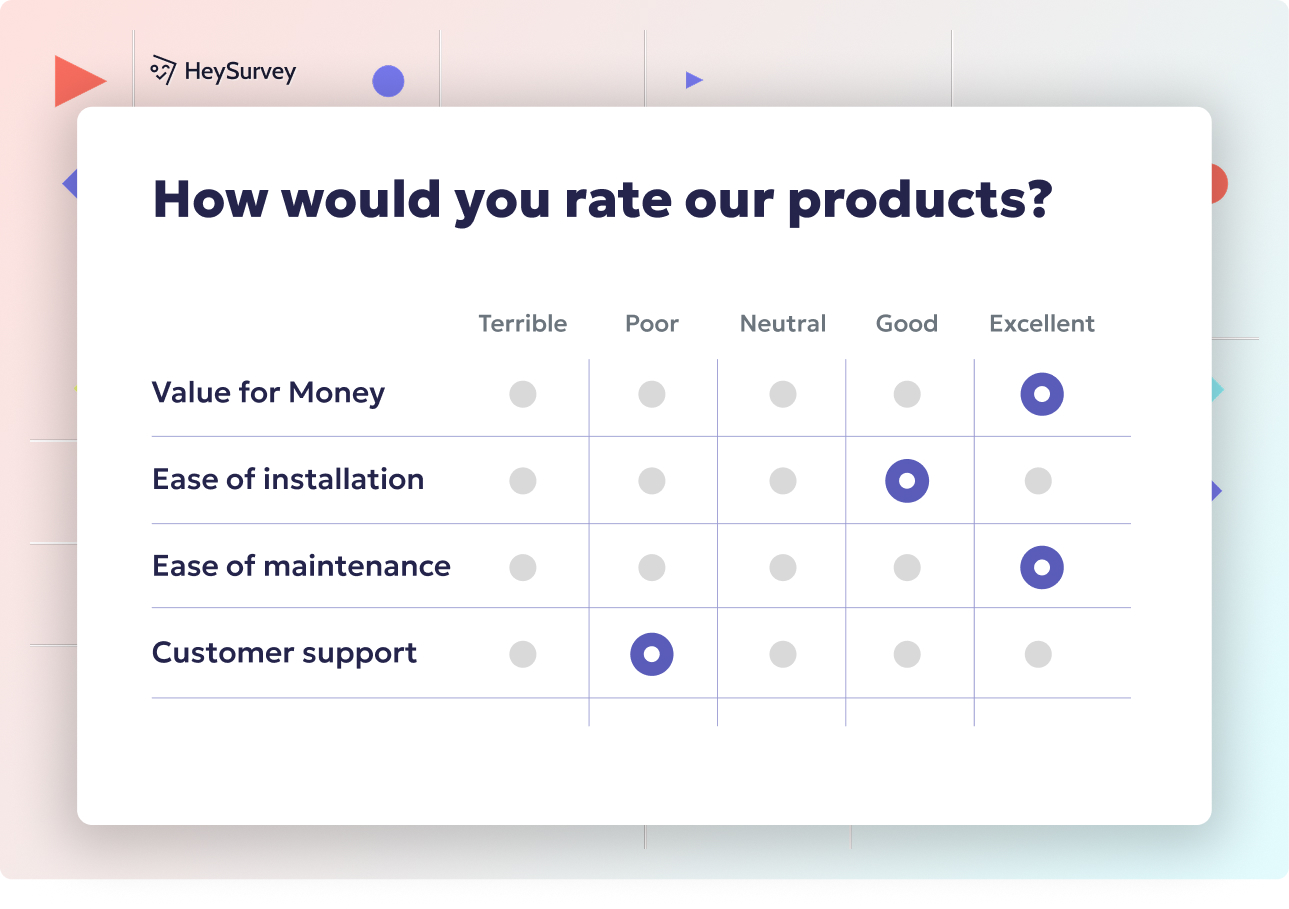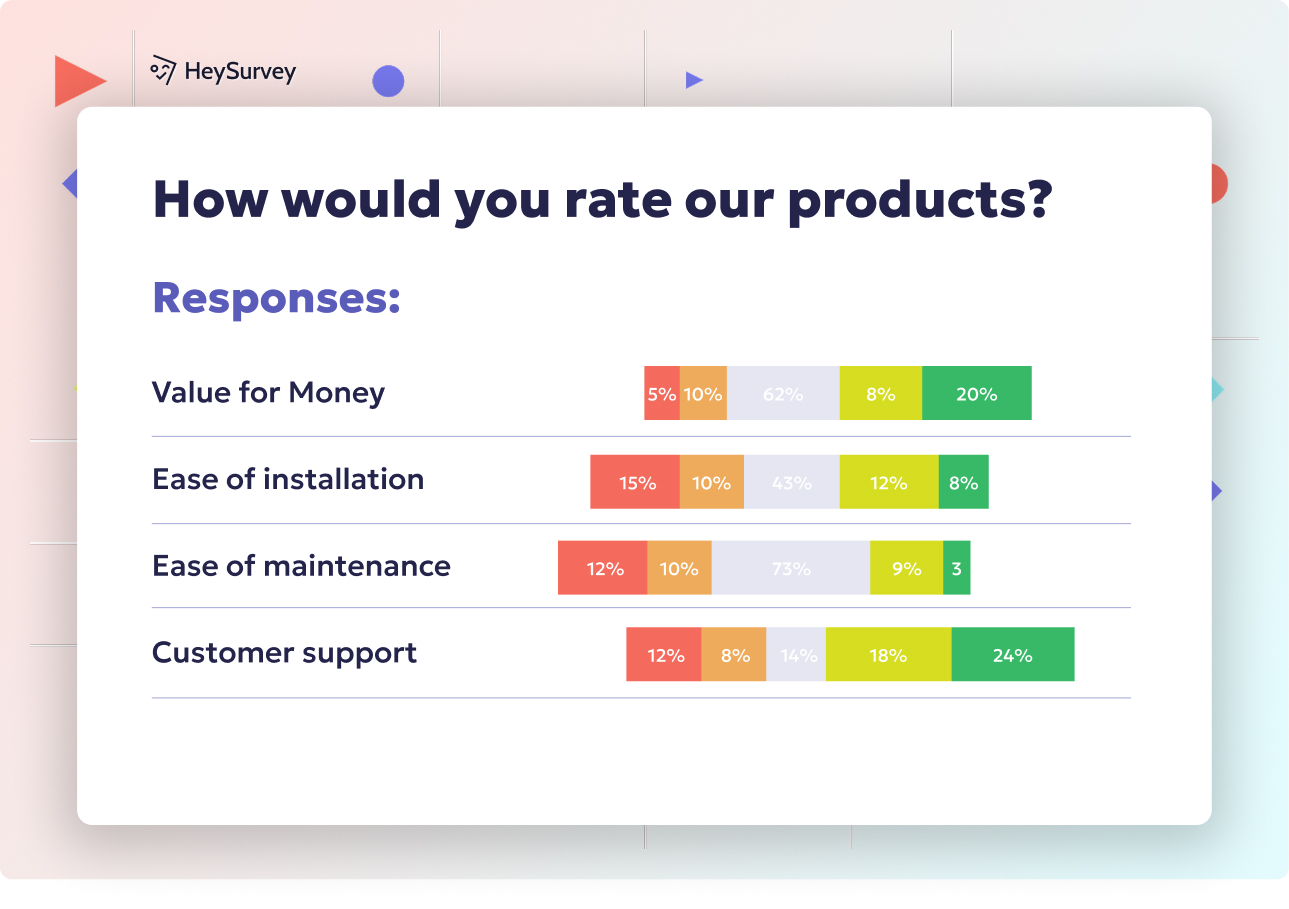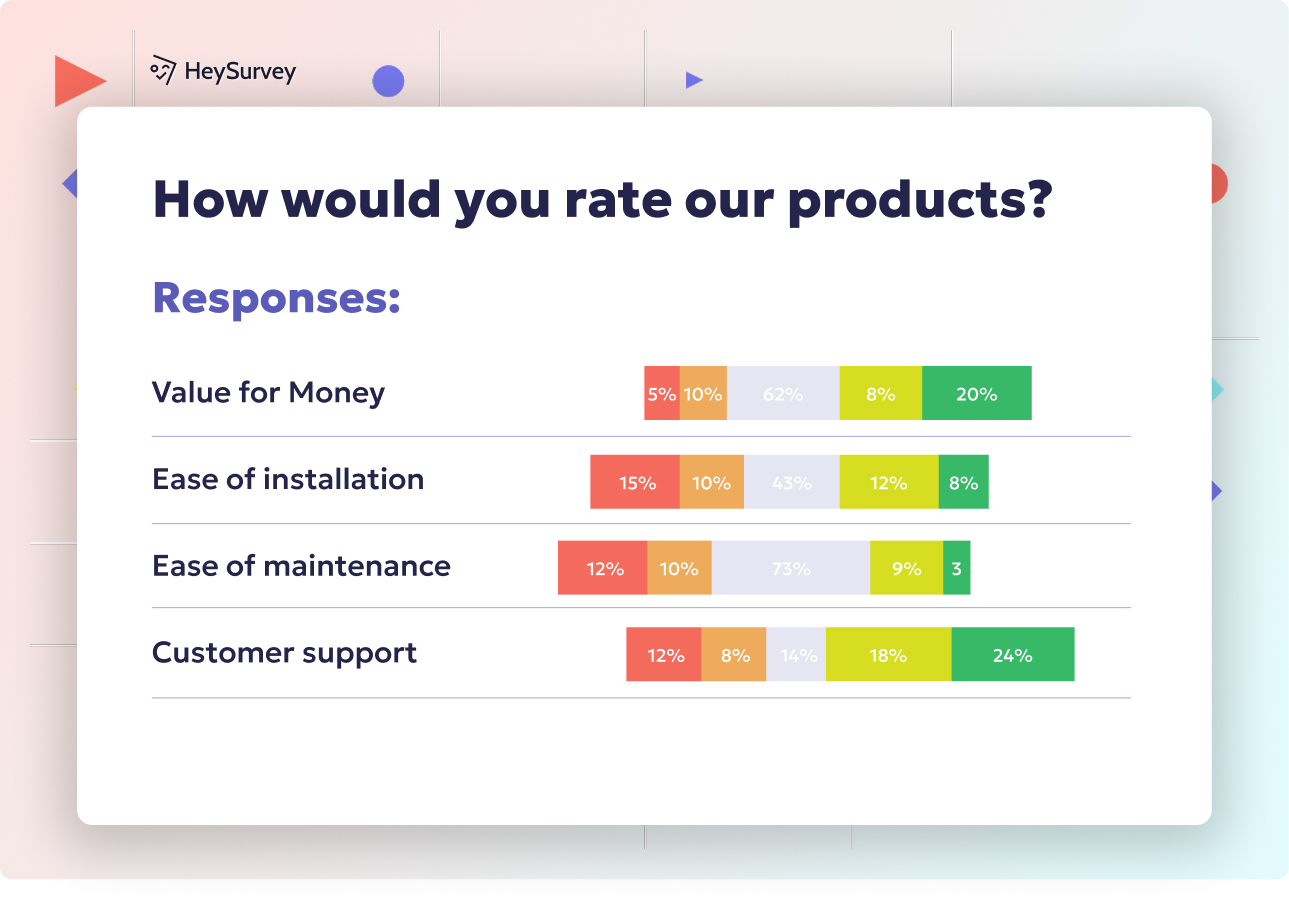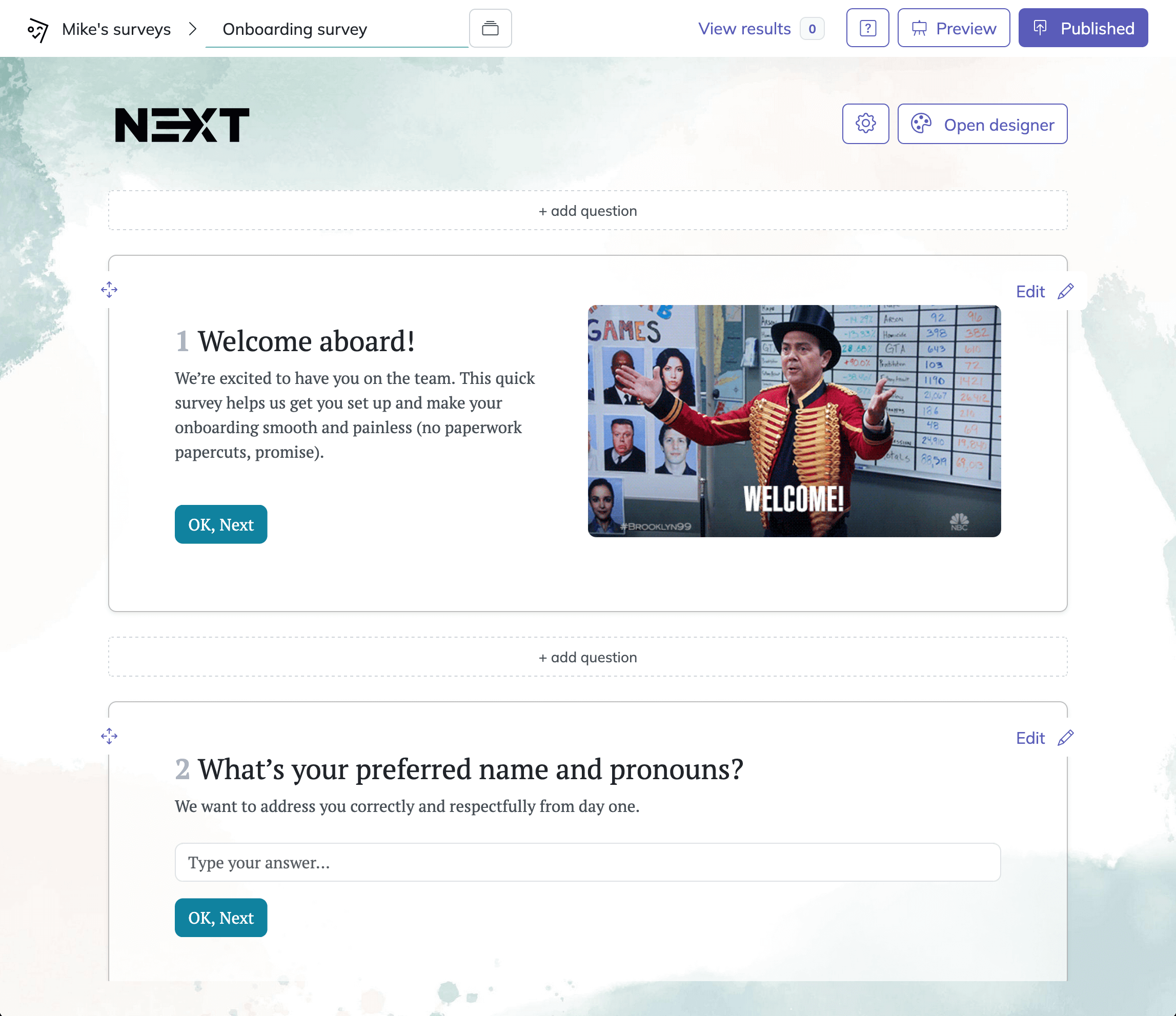31 Team Survey Questions: Types, Examples & Best Practices
Discover 25+ insightful team survey questions to boost engagement, communication, and culture with proven types and best practices.
Team Survey Questions: The Complete Guide
Unlock the true potential of your teams! Well-crafted team survey questions uncover actionable insights that drive engagement, productivity, and vibrant workplace culture. Explore how the right survey, asked at the right time, can transform your organization—boosting retention, revealing hidden blockers, and helping every employee shine.
Introduction: Why Team Surveys Matter
Teams are the beating heart of any company. But how do you really know what they need? That’s where team feedback surveys step in—measuring the mood and highlighting what’s working (and what’s not). Whether it’s an onboarding, post-project, or a quarterly check-in, these surveys catch issues early, keeping leaders a step ahead.
Deploying the right survey, from a workplace pulse questionnaire to an in-depth employee sentiment survey, means fewer blind spots and more actionable intelligence. By tuning into the team's thoughts, organizations steer clear of bottlenecks, spark innovation, and build a space where everyone thrives.
Organizations that actively seek employee feedback have 14.9% higher employee engagement levels compared to those that do not. (psico-smart.com)

Create your survey, it's 100% free
How to Create Your Team Survey with HeySurvey in 3 Easy Steps
If you’re new to HeySurvey and want to build a perfect team survey—whether it’s about engagement, communication, or culture—follow these super simple steps to get started quickly. Ready to uncover those insights? Let’s roll!
Step 1: Create a New Survey
- Head over to HeySurvey and click Create New Survey.
- You can start from scratch or jump-start your survey by opening a relevant template designed for team feedback—just click the button below this guide to load it with all the sample questions already there.
- Give your survey a clear internal name so you can find it easily later (like “Q2 Team Engagement Check”).
Step 2: Add Your Questions
- In the Survey Editor, click Add Question to insert new questions or edit the pre-loaded ones from the template.
- Choose question types depending on your data needs: Likert scales, multiple choice, or open-ended text fields.
- Customize question wording, add explanations if needed, and mark questions as required so important data never gets skipped.
- Don’t be shy—add images, shuffle answer options, or even throw in a “Other” choice to catch unexpected responses.
- Use branching logic for a tailored experience, like skipping irrelevant questions based on previous answers.
Step 3: Publish Your Survey
- Once your survey looks good, hit the Preview button to test it exactly as your team will see it.
- Tweak design and layout on the fly with the Designer Sidebar—adjust colors, fonts, or add your logo for a branded touch.
- When ready, click Publish to make your survey live. HeySurvey generates a shareable link you can email or embed on your intranet.
- Note: Publishing requires a HeySurvey account so you can track responses securely.
Bonus Step 1: Apply Your Branding
- Open the Branding and Settings Panel and upload your company logo to appear in the survey header.
- Customize colors, fonts, backgrounds, and animations via the Designer Sidebar to match your brand vibe.
- These small touches make the survey feel familiar and boost participation.
Bonus Step 2: Define Settings for Control
- Use the settings panel to set start and end dates—perfect if you want a survey live only for a defined period.
- Limit the number of responses, redirect respondents to a custom URL after completion, or allow respondents to view aggregate results.
- These options help you manage the survey’s timing and flow smoothly.
Bonus Step 3: Skip Into Branches for Relevance
- Branching logic lets you send respondents down different paths based on their answers.
- For example, if someone rates communication low, you can automatically show extra questions digging into those issues.
- This keeps surveys smart, relevant, and free of unnecessary questions for respondents, boosting completion rates.
With just a few clicks and these steps, you’ll have a professional, branded team survey ready to launch in no time. So go ahead—start with a template, customize your questions, sprinkle in some branding flair, and publish. Your team’s valuable feedback is just a few answers away!
Employee Engagement Surveys
Employee engagement surveys are more than just a temperature check—they’re a window into your team’s soul. When the mood dips or enthusiasm wobbles, these surveys provide a reality check, ensuring that talent feels seen, heard, and valued. The feedback is essential for organizations aiming to measure motivation, commitment, and job satisfaction.
Why & When to Use
Think of these as your early warning system for employee turnover and disengagement. Use them when you notice retention risks, drops in productivity, or before launching new initiatives that could unsettle your crew. They spotlight burnout, boredom, or overlooked brilliance.
If you time them right—annually or semi-annually—you’ll spot patterns. Here’s why teams often deploy these critical surveys:
- Retaining top performers and discovering pockets of disengagement
- Shaping better recognition and rewards programs
- Checking the impact of major organizational changes
- Gauging excitement before launching a project or a new policy
- Prioritizing resources where they’re needed most
Missing the signs can mean losing great people or missing out on the team’s best ideas. Shine the spotlight on what lights up your team and you unlock innovation and loyalty.
Sample Questions
- How proud are you to work for this team?
- I see a clear link between my work and the company mission.
- How likely are you to recommend our team as a great place to work?
- Do you have access to the resources you need to do your best work?
- How often do you receive recognition for good performance?
Start with these questions, and you’ll keep a close pulse on engagement levels, leading to smarter retention strategies.
65% of employees believe their organizations fail to effectively act on employee survey results, highlighting a significant gap between feedback collection and actionable change. (quantumworkplace.com)
Team Communication Surveys
In the jungle of workplace messaging, communication gaps can quietly stifle progress. A focused survey uncovers where the flow falters, making way for clarity, transparency, and improved information flow across channels. Only then can teams truly collaborate—and avoid those awkward “Didn’t you get my email?” moments.
Why & When to Use
Deploy a communication survey whenever:
- You’ve survived a reorganization or moved to new tools
- Teams are grumbling about misaligned priorities
- There’s a pattern of misunderstandings or missed deadlines
- Major company news didn’t reach everyone
- Feedback reveals confusion about roles or objectives
A team communication survey is especially helpful after adopting new platforms (hello, Slack, Teams, and beyond!). These check-ins reveal not just how people talk, but how well they understand each other—turning information overload into purposeful and clear communication.
Sample Questions
- Team meetings provide the information I need to do my job.
- I feel comfortable voicing concerns during discussions.
- Our communication tools (Slack, email, etc.) are used effectively.
- Information from leadership reaches me in a timely manner.
- How could team communication be improved?
Harnessing the answers, teams see exactly where messages land—or go astray—so everyone’s on the same wavelength.
Collaboration & Workflow Surveys
Crossing the finish line, on time and in sync, demands top-shelf teamwork. A sharp collaboration and workflow survey reveals if people are sailing smoothly or stuck in a tangle of missed handoffs and unclear roles. Unmask where knowledge gets stuck—and get your projects back in the fast lane.
Why & When to Use
Roll these surveys out:
- After project completion, as part of your sprint retrospective
- When deadlines keep slipping without a clear reason
- Whenever cross-functional teams struggle to join forces
- To guide smarter choices about workflow tools and automations
- If you hear grumbling about “who’s doing what” or unfair work distribution
Using this survey as a mirror, teams see exactly where their processes shine and where improvement’s needed. The answers highlight knowledge-sharing gaps, role confusion, and workflow bottlenecks—making it easy to course correct.
Sample Questions
- Roles and responsibilities are clearly defined on our projects.
- Work is distributed fairly across the team.
- We have an efficient system for tracking task progress.
- How often do workflow bottlenecks delay deliverables?
- I can easily access the expertise I need from teammates.
With these insights, you can transform chaos into choreography, letting every player shine.
Regularly conducting team collaboration surveys helps identify communication gaps, clarify roles, and streamline workflows, leading to improved team performance and project outcomes. (surveymonkey.com)
Psychological Safety Surveys
Genius only emerges where people feel safe enough to take risks—and survive the occasional face-plant. That’s why a psychological safety survey is the secret sauce to breakthrough innovations, fearless collaboration, and open conversations about failures and fixes.
Why & When to Use
Consider this survey your culture check-up:
- Before launching ambitious or experimental projects
- When switching to agile or other iterative work models
- During company-wide culture audits or inclusivity pushes
- On sensing fear of mistakes, excessive blame, or reluctance to ask for help
- Any time creativity feels held back by “playing it safe” behaviors
Pinpointing fear-based behavior and unspoken worries can help unlock the creativity and courage every great team needs. If people can speak up, fail fast, and learn bigger, you’ll see ideas multiply and results soar.
Sample Questions
- It is safe to take calculated risks on this team.
- Mistakes are treated as learning opportunities, not failures.
- I can ask questions without feeling judged.
- Team members value diverse perspectives.
- When conflicts arise, we resolve them respectfully.
Run this survey and you’ll know if people are hiding behind silence—or stepping up with ideas that can change your business.
Leadership & Management Feedback Surveys
Even the best managers have blind spots. Regular leadership and management feedback surveys give employees a safe way to coach their leaders, shaping better bosses and braver decisions. With upward feedback, those in charge can fine-tune their style and foster a team that thrives.
Why & When to Use
These surveys are a must:
- Bi-annually, for a routine health check on management quality
- After leadership changes or promotions
- When team morale—or your engagement survey—starts to wobble
- To inform manager coaching and development programs
- If decisions feel opaque, or support feels lacking
Insightful feedback reveals which management habits fire up teams—and which, let’s just say, need to be left behind. The right questions point out gaps you can’t see from the C-suite.
Sample Questions
- My manager sets clear expectations.
- Leadership communicates a compelling vision.
- I receive constructive feedback that helps me grow.
- Decisions from leadership are transparent and fair.
- What could your manager start, stop or continue doing?
With honest, upward input, leaders can switch from good to legendary—one bit of feedback at a time.
Remote & Hybrid Work Experience Surveys
Distance shouldn't mean disconnection. Proper remote and hybrid work experience surveys spotlight the highs and lows unique to distributed teams, revealing what’s working from the home office—and what’s not. Key themes include flexibility, tech hiccups, and the challenge of staying in sync.
Why & When to Use
If your team is working from everywhere, make these surveys your compass:
- After implementing or updating remote/hybrid policies
- Quarterly, to catch evolving work-life balance or tech needs
- When feedback hints at growing isolation or collaboration gaps
- As distributed team size increases (hello, time zones!)
- On the back of major tool changes or remote onboarding efforts
The surveys peel back layers to uncover:
- Ergonomic headaches or workspace struggles
- Social isolation or virtual meeting fatigue
- Chronic time-zone scheduling woes
- Gaps in remote collaboration and IT support
- The need for clearer work-life boundaries
With bold data, companies adapt to the unique challenges of remote teamwork, turning distance into an advantage.
Sample Questions
- I feel connected to my teammates despite working remotely.
- My home workspace supports productivity and wellbeing.
- Virtual meetings are as effective as in-person ones.
- The company respects my work-life boundaries.
- Rate the reliability of remote collaboration tools.
By tuning in, you give every team member the support they need—wherever they plug in.
Team Culture & Values Alignment Surveys
Culture isn’t just what’s printed on the lobby wall—it's how people show up (or don’t) every day. A targeted team culture and values alignment survey reveals if your values are alive and kicking or gathering dust by the copy machine.
Why & When to Use
Deploy these surveys in moments that define your company:
- During culture-building and scaling efforts (before that splashy IPO!)
- When you’re crafting or revising core company values
- After mergers, acquisitions, or seismic org shifts
- If sub-cultures are clashing or values feel “for show”
- To shape or evaluate recognition programs and team rituals
You’ll uncover:
- If values are visible in daily decisions
- Belonging and inclusion on teams
- Where ethical boundaries are drawn and respected
- Sub-cultures that might be operating at odds with the company vision
- Opportunities to spotlight (or rework) recognition and rewards
A values-aligned team hums along, singing from the same songbook—and that harmony is powerful.
Sample Questions
- Our team lives the company values in everyday actions.
- I feel a sense of belonging on this team.
- Ethical considerations guide our decisions.
- Recognition programs reflect our cultural values.
- Which value do you think we embody least, and why?
With honest answers, culture goes from abstract to actionable—and you build a place where everyone fits.
Pulse Surveys (Quick Temperature Checks)
Who wants to wait a year to fix what’s broken? Pulse surveys are the speedy superheroes of feedback, surfacing real-time insights about morale, stress, and blockers. Short, sharp, and frequent—they keep your finger on the team's pulse.
Why & When to Use
Use pulse surveys when lightning-fast insights matter most:
- Bi-weekly or monthly, especially during times of rapid change
- Midway through big projects, mergers, or reorganizations
- When monitoring stress, burnout, or fluctuating morale
- As an early-warning system to detect issues before they snowball
- When annual surveys are just too slow for your fast-paced crew
Pulse surveys are your best bet for:
- Spotting burnout and celebration moments “in the now”
- Capturing shifting sentiment as teams adapt to change
- Surfaces quick wins and red flags that need immediate attention
- Reinforcing the message: “We’re listening—now.”
Their simplicity and speed mean higher response rates and a sound check on what your team feels, week by week.
Sample Questions
- On a scale of 1–10, how would you rate your morale this week?
- What’s the biggest blocker you faced in the last seven days?
- How confident are you that goals for this sprint are achievable?
- Do you have the support you need right now?
- One word to describe your current workload?
Less time, less stress, and more impact—with pulse surveys, you’re always in tune.
Best Practices: Dos and Don’ts for Effective Team Surveys
Great surveys demand more than clever questions. They thrive on strategy, trust, and follow-through. For truly actionable team surveys, follow these surprisingly simple (yet powerful) rules:
- Do keep surveys concise: Time is precious—respect your team’s focus.
- Do ensure anonymity: People speak more freely if their name isn’t attached.
- Do close the feedback loop: Share results and action plans quickly.
- Do segment results: Spot trends across roles, departments, or locations.
- Do A/B test question wording: Find out what’s truly clear (or confusing).
- Do use a mix of Likert scales and open-ended questions: Numbers show trends, while comments expose nuance.
- Do time your surveys wisely: Quarterly is great for most; pace based on business needs.
And just as crucial, avoid these pitfalls:
- Don’t use biased wording: Neutral, clear questions earn truer answers.
- Don’t ignore negative feedback: It’s your golden opportunity for improvement.
- Don’t survey too rarely or too often: Annual can be too slow, weekly too much (except for pulse checks).
- Don’t reveal identifiable data: Breaking confidentiality destroys trust.
- Don’t treat the survey as a black hole: Always communicate next steps.
Leverage robust survey software analytics to visualize trends by team, department, or geography. This extra insight brings hidden patterns to light.
So, keep it simple, safe, and strategic—the winning recipe for surveys people love (and leadership trusts).
Ready to take your team’s pulse? With these questions and best practices, you’re set to craft surveys that reveal what really shapes engagement, productivity, and peak performance. Let the listening—and the growth—begin!
Related Employee Survey Surveys

29 Essential Post Mortem Survey Questions for Project Success
Discover 25+ essential post mortem survey questions to improve projects, boost team morale, and d...

31 Change Readiness Survey Questions to Boost Your Success
Discover 25+ sample change readiness survey questions to assess attitudes, barriers, and confiden...

31 Retreat Survey Questions to Collect Actionable Feedback
Discover 26 essential retreat survey questions to gather actionable feedback before, during, and ...

